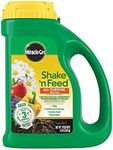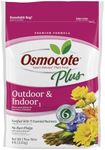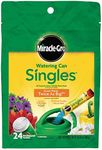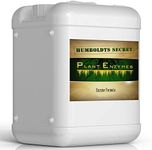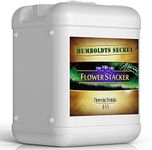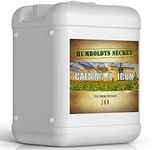Buying Guide for the Best Fertilizer For Outdoor Plants
Choosing the right fertilizer for your outdoor plants is crucial for their growth and health. Fertilizers provide essential nutrients that plants need to thrive, and selecting the right one can make a significant difference in your garden's success. When picking a fertilizer, consider the type of plants you have, the soil condition, and the specific needs of your garden. Understanding the key specifications of fertilizers will help you make an informed decision and ensure your plants get the nutrients they need.N-P-K RatioThe N-P-K ratio represents the percentage of nitrogen (N), phosphorus (P), and potassium (K) in the fertilizer. These are the primary nutrients that plants need. Nitrogen promotes leafy growth, phosphorus supports root development and flowering, and potassium enhances overall plant health and disease resistance. For leafy vegetables, a higher nitrogen content is beneficial, while flowering plants and root crops may require more phosphorus and potassium. Choose a balanced ratio for general garden use or a specific ratio tailored to your plant's needs.
Type of FertilizerFertilizers come in various forms, including granular, liquid, and slow-release. Granular fertilizers are easy to apply and provide nutrients over time, making them suitable for general garden use. Liquid fertilizers are fast-acting and ideal for quick nutrient boosts, often used for container plants or during the growing season. Slow-release fertilizers gradually release nutrients over several months, reducing the need for frequent applications. Consider your gardening habits and the specific needs of your plants when choosing the type of fertilizer.
Organic vs. SyntheticOrganic fertilizers are made from natural materials like compost, manure, and bone meal, and they improve soil structure and microbial activity. They release nutrients slowly and are environmentally friendly. Synthetic fertilizers are chemically manufactured and provide nutrients quickly, which can be beneficial for immediate plant needs. However, they may not improve soil health in the long term. If you prefer sustainable gardening practices, opt for organic fertilizers. For quick results or specific nutrient deficiencies, synthetic fertilizers can be effective.
MicronutrientsIn addition to the primary nutrients (N-P-K), plants also need micronutrients like iron, manganese, zinc, copper, and boron in smaller amounts. These micronutrients are essential for various physiological functions and overall plant health. Some fertilizers include micronutrients, while others do not. If your soil is deficient in certain micronutrients, choose a fertilizer that provides a comprehensive nutrient profile. Soil testing can help determine if your garden needs additional micronutrients.
Application MethodThe method of applying fertilizer can affect its effectiveness. Some fertilizers are designed to be mixed into the soil, while others are applied to the soil surface or as foliar sprays. Soil-applied fertilizers are suitable for long-term nutrient supply, while foliar sprays provide quick nutrient absorption through the leaves. Consider the ease of application and the specific needs of your plants when choosing a fertilizer. For example, foliar sprays can be useful for addressing nutrient deficiencies quickly, while soil-applied fertilizers are better for sustained growth.
Soil pH CompatibilitySoil pH affects nutrient availability to plants. Some fertilizers are formulated to work best within specific pH ranges. Acidic soils (low pH) may require fertilizers that help raise the pH, while alkaline soils (high pH) may need fertilizers that lower the pH. Understanding your soil's pH can help you choose a fertilizer that complements your soil conditions and ensures optimal nutrient uptake by your plants. Soil testing kits are available to determine your soil's pH level.
